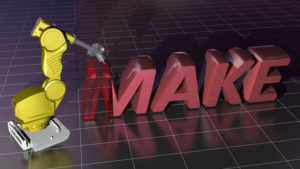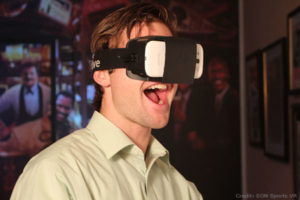
21st Century Western civilization bears the brunt of the greatest health threat since the black plague. Although not quite as dramatic — there are no bodies in the street or mass graves of the afflicted, for example — the death count is high and climbing, and the toll on company costs (from health insurance to lost productivity) seems unending. While the actual disease presentation varies among individuals, the leading cause is the same: death by sitting.
Sure, there are other demons to blame too, such as consuming too much sugar and too few vegetables — but all told, technology is to blame for the prevailing lack of inertia.
“People are effectively imprisoned by circumstance where they are unable to listen to their body’s need to move,” said Joseph J. Sweere, D.C., professor in the chiropractic clinical sciences division and chairman of the department of occupational health in the College of Chiropractic at Northwestern Health Sciences University.
“They are stuck interacting with technology for long periods,” he told TechNewsWorld, “It is the common denominator of illnesses and injuries.”
Frozen in Cubicle Space
The typical office worker, from C-level to cubicle sea level, is imprisoned within a 16-to-20 square foot area. That is roughly the area bordered by desk and credenza or cubicle walls. Sure, executives’ offices can be much larger than that, but the area they spend most of their time in is the tiny equivalent of the commoner’s cubicle — the length of arm’s reach and the width of the standard plastic chair mat.
Compare that to the standard size of jail cells — 6 foot by 8 foot, or 48 square feet — and the term “imprisoned,” as used by Sweere, takes on a more disturbing feel.
Yet “imprisoned” is precisely the right term. Workers today are tied to small spaces, at home and at work, for most of the day. If there is movement at all, it is too short in duration to provide much benefit: a trip to the restroom, a conference room or a break room; perhaps to the car — but more commonly to other technological masters such as the TV. Because of these narrow opportunities to move, we consider ample exercise to be a 30-minute morning jog or a walk up a flight of stairs. But these “workouts” are mere momentary stretches and not the movement we actually need.
“Our bodies crave movement even in our sleep. It is innate: We wiggle as infants and even turn in the womb,” said Sweere. But at our desks, “our joints are locked in the loaded position, creating mechanical stress and a breakdown of the body framework.”
The Carpal Tunnel Conundrum
Our tiny office confinements do allow for some movement, but it is repetitive and wearing, as opposed to stretching and building, as true exercise would be. Hence the advent of new ailments such as carpel tunnel syndrome. Repetitive typing does not strengthen the hand, but wears it down, further restricting our movement.
That’s not the only assault responsible for carpal tunnel syndrome.
The hunch position — common in technology use, from BlackBerrys to desktops — is also attacking hand movement, but this time from an unexpected direction.
“If the upper body rounds forward, this causes compression in the nerves going down the arm to the wrist,” Dana Davis, certified balance method posture instructor and a certified yoga teacher, told TechNewsWorld. “Changing posture to a healthier alignment can help prevent or improve symptoms of carpal tunnel syndrome as well as other problems.”
Many people also believe that sitting at computers causes back pain, but that may prove to be a posture issue as well.
“The problem is not that we sit at computers all day long, but HOW we are sitting at them,” said Davis. “We do still need movement for general body health, but we can improve the effects of exercise and sitting at the computer by improving posture.”
For now though, the workforce is an army of hunchers imprisoned in tiny work spaces.
The Total Body Effect
Imprisonment is a total body experience, and its toll is counted system-wide.
“The problem with workers relating to screens and technology all day is both physical and psychological,” Bertie Bregman, M.D., chief of family medicine service at New York-Presbyterian, told TechNewsWorld. He cites the following as examples of total body harm:
Screens constantly emit light into the eye, day and night. Humans are diurnal. They’re made to have light in their eyes during the day, but not at night, and computer screens are one of the light sources that can overload the eye — and brain — with light exposure.
Heads are made to sit atop necks and look ahead, not down. There’s a natural “S” curve in the spine that is compromised when people look down continually, or tilt their heads slightly downward for long periods of time. This is bad for vertebrae in the neck.
Socially, people are “made” for bonding tightly in communities — we’re wired for constant interaction. Even though email, texting, etc. are forms of communication, they lack several major hallmarks of human communication, including facial expressions, eye contact, tone of voice, and gestures of the hand. Without these basics of communication, people can develop a social myopia and become less adept at reading other human beings.
The very nature of humanity has been changed by the nature of our work.





















































